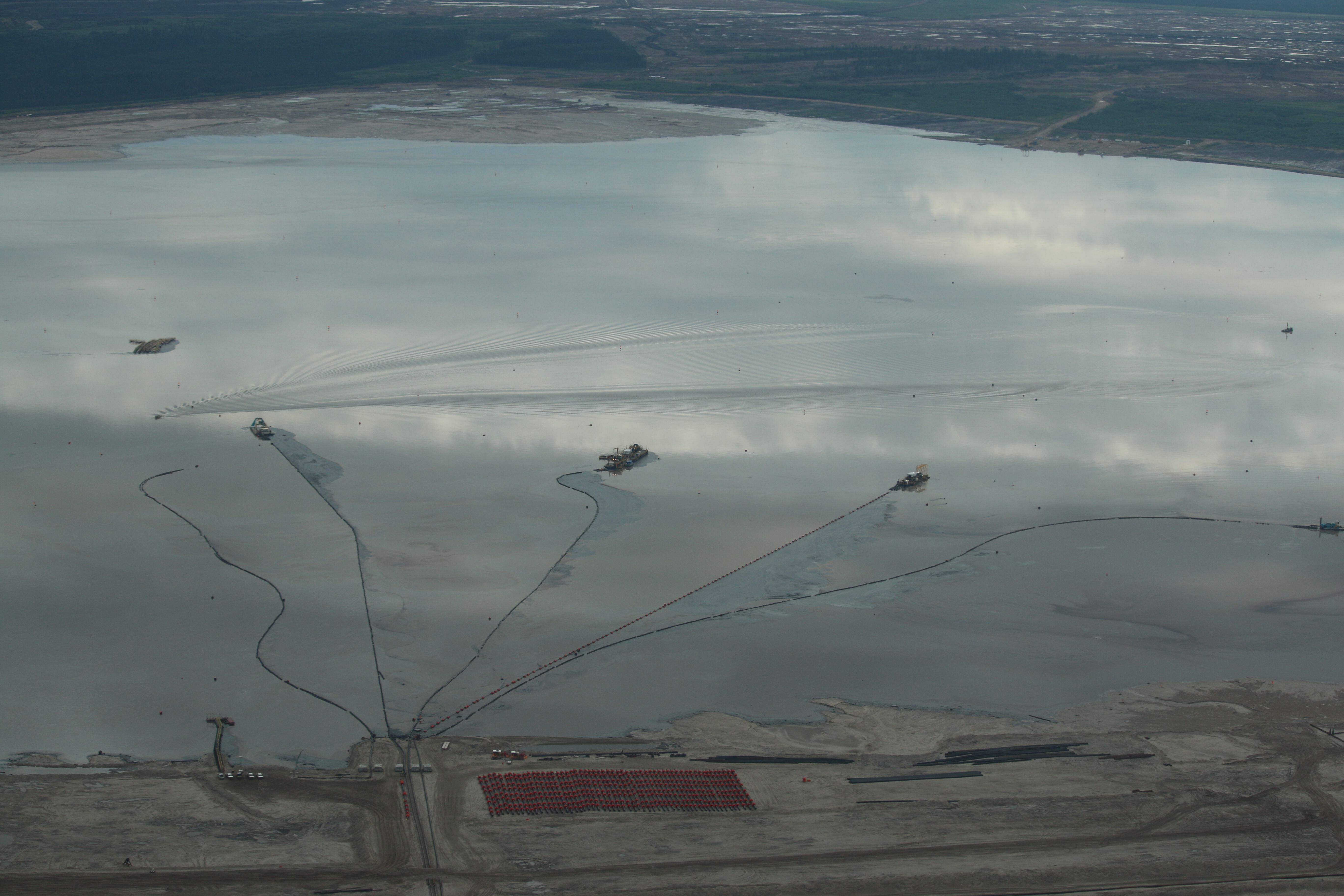In early December CBC published an article about tailing lakes that included the Federal government’s intentions to allow oil sands companies to dump toxic tailings water into the Athabasca River– a plan that was previously forbidden.
Tailings lakes are the large toxic industry-created reservoirs that keep growing, leaking and harming local ecosystems and First Nations communities. We previously wrote about the plans to release this toxic water into the Athabasca River, explaining how there is no study independent of industry that shows this plan is safe for communities. All of that is still true.
With the government’s intentions now public, let’s check-in to see if anything has changed regarding the safety of dumping toxic water into freshwater.
There is nothing out there that indicates the proposed method is safe
There is a lot we do not know about toxic tailings lakes, and their impact on First Nations communities downstream and on wildlife. While we know tailings are currently leaking toxic water into groundwater, the government has done no study on the health impact this has had – despite high rates of rare cancers in the First Nations communities downstream. With so little known, how can we design trustworthy solutions?
No independent studies have been done to show that the treatment and release method would bring tailings to a safe level.
Tailings ponds contain mercury, arsenic, cyanide, benzene and naphthenic acids, all pose a risk to the Athabasca River, the wildlife it hosts, and the people who depend on it. The impact of releasing literally trillions of litres of toxin-laden tailings, even if treated, into a freshwater ecosystem is not understood. While technology to clean up the water before it is released has been presented as the solution to this industry-made problem, this technology remains unproven.
Government is failing to enforce existing laws meant to protect people and the environment in the oil sands
Proposed release regulations would weaken the strength of the Fisheries Act, which is designed to protect bodies of water such as the Athabasca River, and industry has not guaranteed that their technology would create safe-clean water.
Industry has not proven themselves to be worthy of our blind trust that they will prevent ongoing leaks and eventually clean up the ponds. So , before developing new regulations that cater to industry’s desires, the Federal government should enforce its existing laws.
In 2020, the Commission for Environmental Cooperation, an international body created under NAFTA, released a Factual Record that provided strong evidence that tailings ponds are seeping and therefore that their continued operation, in the absence of regulatory authority, constitutes a violation of the Fisheries Act.
The Minister of the Environment at the time expressed grave concern, but no oil sand operator has been prosecuted since. This continual lack of action has allowed millions of additional liters of toxic water to leak from the tailings ponds.
Government is choosing industry-prefered methods over safe, community-approved ones
It is the oil sands operators who have created this enormous problem. They have allowed the tailings to leak, caused the death of hundreds of birds, and destroyed vast amounts of land that was once pristine boreal forest. Industry has also failed to save even 1 per cent of the money that it will cost to clean up the tailings!
The treat and release method is now industry’s way to cheaply counter the growing concerns of First Nations downstream and their allies. Several First Nations communities have been asking that all reclamation options be considered by the government. Neither the Federal nor the Provincial government has respected this request to consider other options and have instead imposed the release regulations as the only option about which they will consult communities.
As Jesse Cardinal, executive director of Keepers of the Water, shared with CBC’s Kyle Bakx, “communities are stuck because they oppose the release of the tailings water, but the status quo is also unacceptable because of the seepage and dam failure risks of tailings ponds”.
To address the issue of growing ponds, industry could treat and reuse, not treat and release
Industry and government have reluctantly realized the dire need for action to address the rapid growth of tailings and the threat they pose. Instead of investing the time and money to research safe mitigation methods they are proposing a solution that could have catastrophic effects.
There are other solutions.
The obvious solution to stop tailings growth would be doing what climate scientists and energy analysts are also asking us to do: phase out the production of oil in the oil sands.
Another solution that involves industry’s new favourite technique would be to treat the water and then reuse it in the extraction process. This should be a no-brainer: on one hand, it would avoid using large amounts of freshwater from the Athabasca river to produce oil, and on the other it stops the growth of the ponds.
Industry finds that to be complicated: through every cycle of reuse, the water quality is degraded despite being treated, so they prefer to use uncontaminated water for oil production, and dump it after it’s used
This begs the question: if water treatment technology is insufficient to bring the water to a quality acceptable for industrial production, how could it possibly be brought to a quality that would allow it to be disposed into a source of drinking water for First Nations communities?
The situation in the oil sands is alarming,the Federal government must step in to protect surrounding ecosystems and downstream communities. The government must respect First Nations communities that are requesting that full reclamation solutions be considered and explored. and must resist the push by industry to use cheap, unsafe and unproven methods to solve the problem they created.









